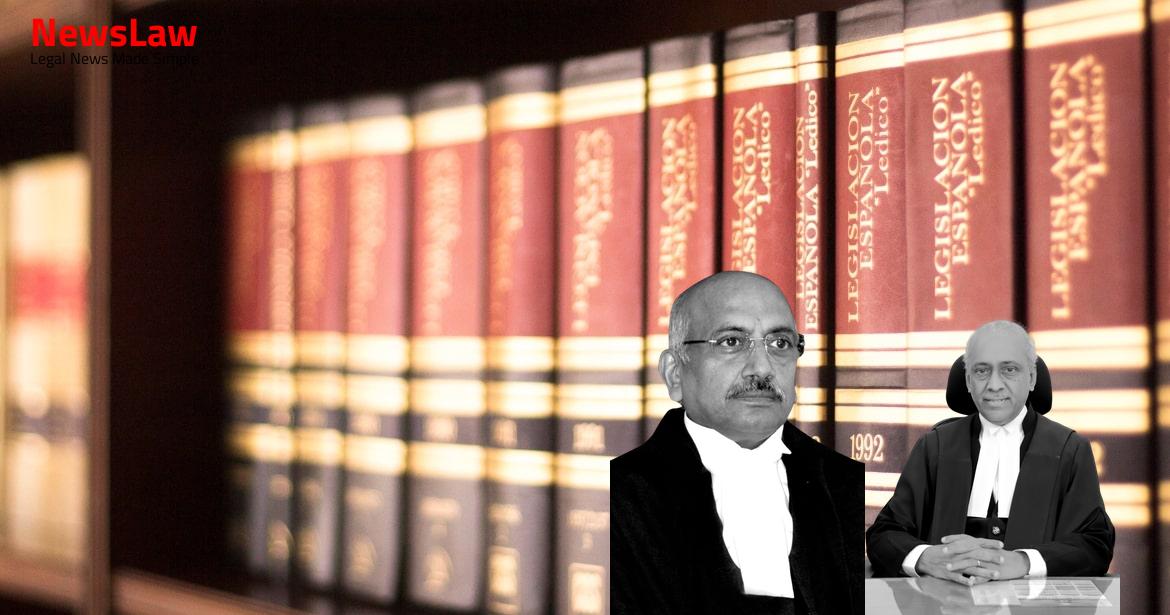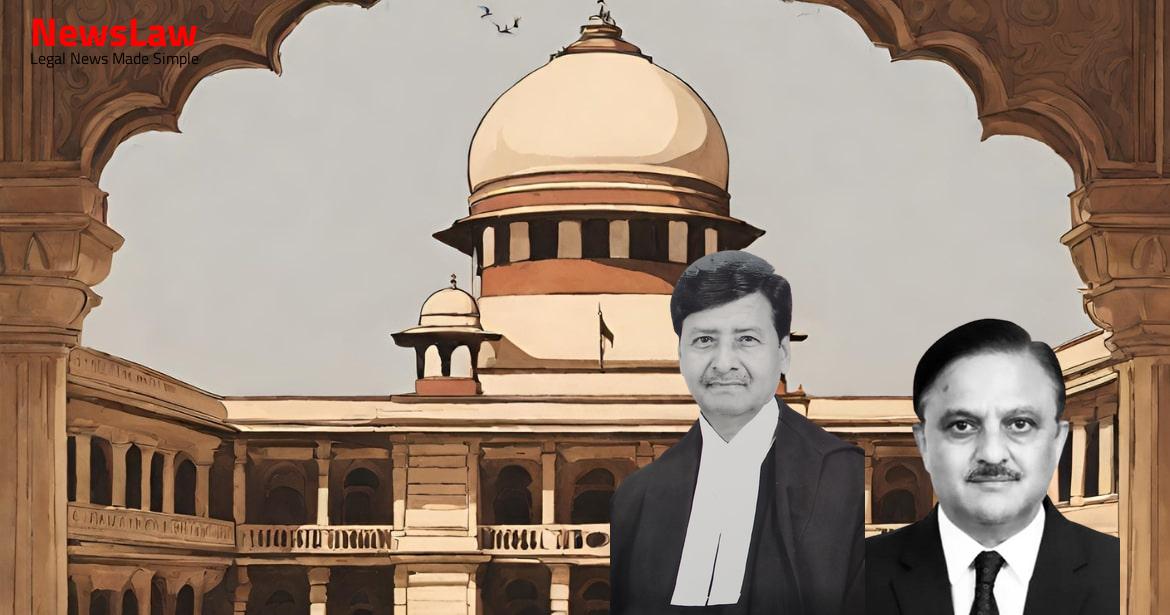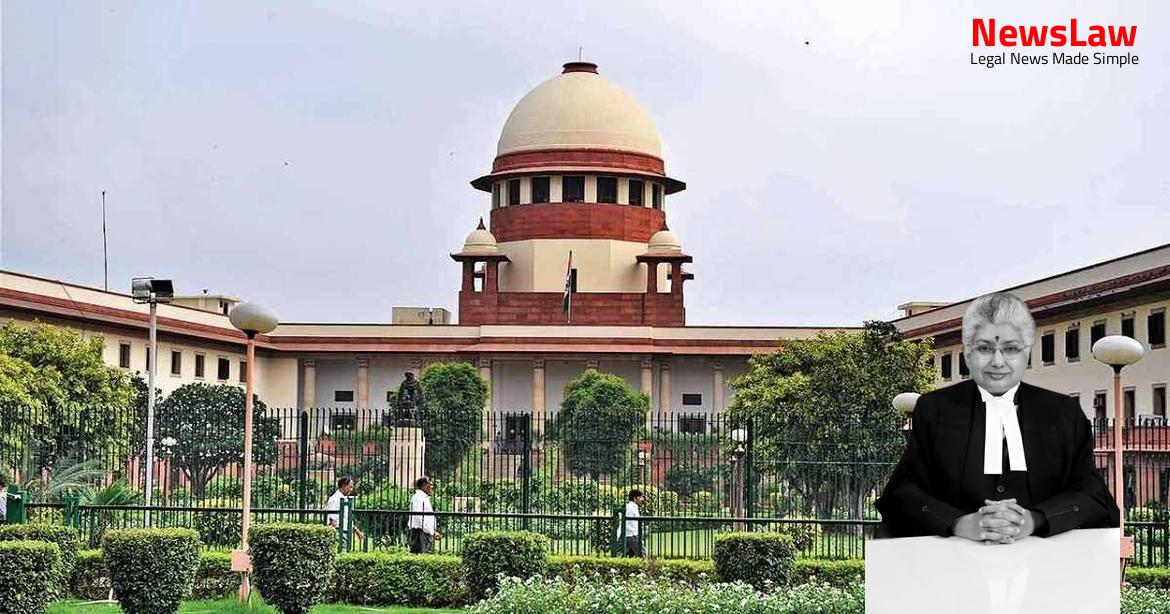Delve into the detailed legal analysis conducted by the court in a recent judgment pertaining to a dispute over land ownership. The court’s examination of various laws and constitutional provisions sheds light on the complexities of the case and the rights of the involved parties. This blog post explores the nuances of the court’s findings and their impact on the resolution of land ownership conflicts.
Facts
- The expression ‘common purpose’ in the Punjab Village Common Lands (Regulation) Act, 1961 was amended by Punjab Act No. 27 of 1960, but the amendment was set aside.
- The impugned provisions of the Amending Act introduced in 1991 are under challenge.
- Customary Law by Sir W.H. Rattigan, published in 1880, explains the origin of Shamilat law in Punjab.
- The Punjab Village Common Lands (Regulation) Act, 1961 was amended by Haryana Act No. 9/1992 in 1992.
- The East Punjab Holdings (Consolidation and Prevention of Fragmentation) Act, 1948 was enacted for compulsory consolidation of agricultural holdings, defining ‘common purpose’ under Section 2(bb) as any purpose related to the common need, convenience, or benefit of the village.
- The amendments made by the Amending Act were reviewed by the Full Bench of Punjab and Haryana High Court in the case of Jai Singh & Ors. v. State of Haryana.
- The High Court ruled that the amendments were invalid and struck them down.
- A Civil Appeal was filed by State of Haryana against this ruling, which was accepted by the Supreme Court on 6.8.1998.
- The Supreme Court held that individual land proprietors had been completely deprived of their rights, amounting to total expropriation.
- Subsequent appeals were made against this order and against the Full Bench’s decision to dismiss the review application.
- The Full Bench affirmed that the language of the relevant sections could not be interpreted to support a program that took lands from individual proprietors and gave them to others or to the Panchayat.
Also Read: Landmark Judgment on Compensation for Fatal Accident
Arguments
- Mr. Kamat has raised an argument that the amendment was necessitated to remove the encroachments on the land reserved for common purpose is not tenable.
- The argument raised was that the proprietor (land owner) was a small landholder within the meaning of the Punjab Security of Land Tenures Act, 1953, therefore, no part of his land could be acquired without payment of compensation.
- The High Court in Suraj Bhan held that the proprietors cannot be divested of their proprietary rights in ‘Jumla Mushtarka Malkan’ or ‘Jumla Malkan Wa Digar Haqdaran Arazi Hasab Rasad Raqba’ lands without payment of compensation.
- The High Court further held that the provisions of the Amending Acts amending the 1973 Municipal Act and the 1994 Corporation Act would amount to compulsory acquisition without payment of compensation which is impermissible in law.
- Mr. Manoj Swarup, learned Senior Counsel appearing for the proprietors argued that the effect of the Amending Act is that the land stands vested with the Panchayat and, therefore, there is no embargo on the Panchayat to sell or alienate the land so vested.
- Shamilat Deh is the land owned by Gram Panchayat to be used for common purposes under Section 2(g)(1) of 1961 Act before consolidation.
- It was contended that if the land is not put to common use, the Panchayat can lease out such land, such leasing would be for optimum utilization of land reserved for common purposes.
- The High Court held that the appellant in Civil Appeal No 1679 of 2022 is aggrieved against the direction to pay compensation treating the action of the State as an acquisition and holding that the owners are entitled to compensation under Article 300-A of the Constitution.
- Mr. Kant argued that the Haryana Panchayati Raj Act, 1994 contemplates the satisfaction where the whole of the sabha area included in the municipality or cantonment, the Gram Panchayat shall cease to exist and the assets and liabilities shall vest with the municipality.
- The amendments in the 1961 Act grant finality to the Authority’s order and override any other law or agreement.
- The Panchayat’s control over the land is supported by the 1961 Act, despite the 1948 Act’s provisions.
- Proprietors argue that the 1961 Act divests their ownership rights without compensation, violating Article 300A of the Constitution.
- Proprietors claim to be the rightful owners of the land reserved for common purposes.
- Arguments about ‘shamilat deh’ land being reserved for village benefit and not to be transferred to municipal bodies.
- The unutilized ‘bachat land’ should revert to the proprietors as it does not fall under ‘shamilat deh’ and cannot be controlled by the Gram Panchayat.
Also Read: Land Acquisition Compensation Analysis
Analysis
- The Full Bench of the Punjab and Haryana High Court in a judgment reported as Parkash Singh & Ors. v. Joint Development Commissioner, Punjab & Ors. found that ‘Jumla Mushtarka Malkan’ land is not included in the shamilat deh in the State of Punjab.
- The only forum available for a person disputing title in ‘Jumla Mushtarka Malkan’ land is the principal Court of civil jurisdiction.
- The judgment of Ranjit Singh upheld that land reserved for income of the Gram Panchayat under the 1948 Act was part of agrarian reform and protected by Article 31A of the Constitution.
- The property was held to be acquired as part of agrarian reform under Article 31A and no compensation was payable.
- Reservation of land for Panchayat income, extension of abadi for non-proprietors, and for common purposes was valid under Article 31A(1)(a) of the Constitution.
- The land within the ceiling limit of the proprietor, pooled for common purposes, was considered part of agrarian reforms by the Punjab High Court.
- The judgment in Jagat Singh challenged the reservation of 20 acres of land for the Gram Panchayat’s income, which was found to contravene the second proviso to Article 31A of the Constitution.
- The Full Bench in Suraj Bhan & Ors. v. State of Haryana & Anr. gave the historical background of shamilat deh lands, ruling on the ownership and management of such lands by the Gram Panchayat.
- The judgment in Hukam Singh v. State of Punjab examined Article 31 and Article 31A, concluding that ‘extinguishment’ does not mean total abolition of rights.
- The High Court in Suraj Bhan struck down provisions of amending statutes amending the 1973 Municipal Act and the 1994 Corporation Act following the Rajender Parshad decision.
- The judgment discusses the various nomenclatures used to record shamilat lands in revenue records, such as shamilat deh, shamilat tikkas, shamilat tarrafs, pattis, pannas, and tholas.
- It mentions that disputes regarding the nature of occupation by the occupants or by the panchayat should be resolved under the 1961 Act.
- The State is in appeal against the judgment rendered by the Full Bench in Suraj Bhan.
- The principle of merger is explained, stating that the order of the higher court becomes the operative order.
- Khewatdars collectively treated as owners of the land in a village (‘malkan deh’).
- The judgment refers to the 1948 Act as a pre-constitution law upheld by the High Court in the first round.
- The importance of land falling under specific categories is highlighted, such as land for common purposes reserved during consolidation and shamilat deh lands being enjoyed collectively by khewatdars and other inhabitants of the village.
- Different provisions and amendments in Acts like the 1961 Act and 1985 Act are discussed to determine management and control of shamilat lands.
- The judgment emphasizes that once land vests with the Panchayat for common purposes, it cannot revert back to the proprietors.
- Act No 9 of 1992, the Amending Act is valid and not constitutionally infirm
- In case of dispute over right, title, or interest in land, remedy under the 1961 Act must be used
Also Read: Judicial Review of Search and Seizure Authorization
Decision
- The land reserved for common purposes by pro-rata cut must be utilized by the Gram Panchayat for present and future village community needs.
- No part of the land reserved for common purposes can be re-partitioned among the proprietors.
- Appeals filed by the State and panchayats are allowed, while those filed by the proprietors are dismissed.
- Writ petitions filed before the High Court are also dismissed.
- This decision affects all three categories of land: shamilat deh owned by the panchayat, shamilat land vested as per the 1948 Act, and land within the permissible limits of the proprietor but managed and controlled by the panchayat.
Case Title: THE STATE OF HARYANA THROUGH SECRETARY TO GOVERNMENT OF HARYANA ETC.ETC. Vs. JAI SINGH AND ORS.ETC. ETC. (2022 INSC 400)
Case Number: C.A. No.-006990-006990 / 2014



